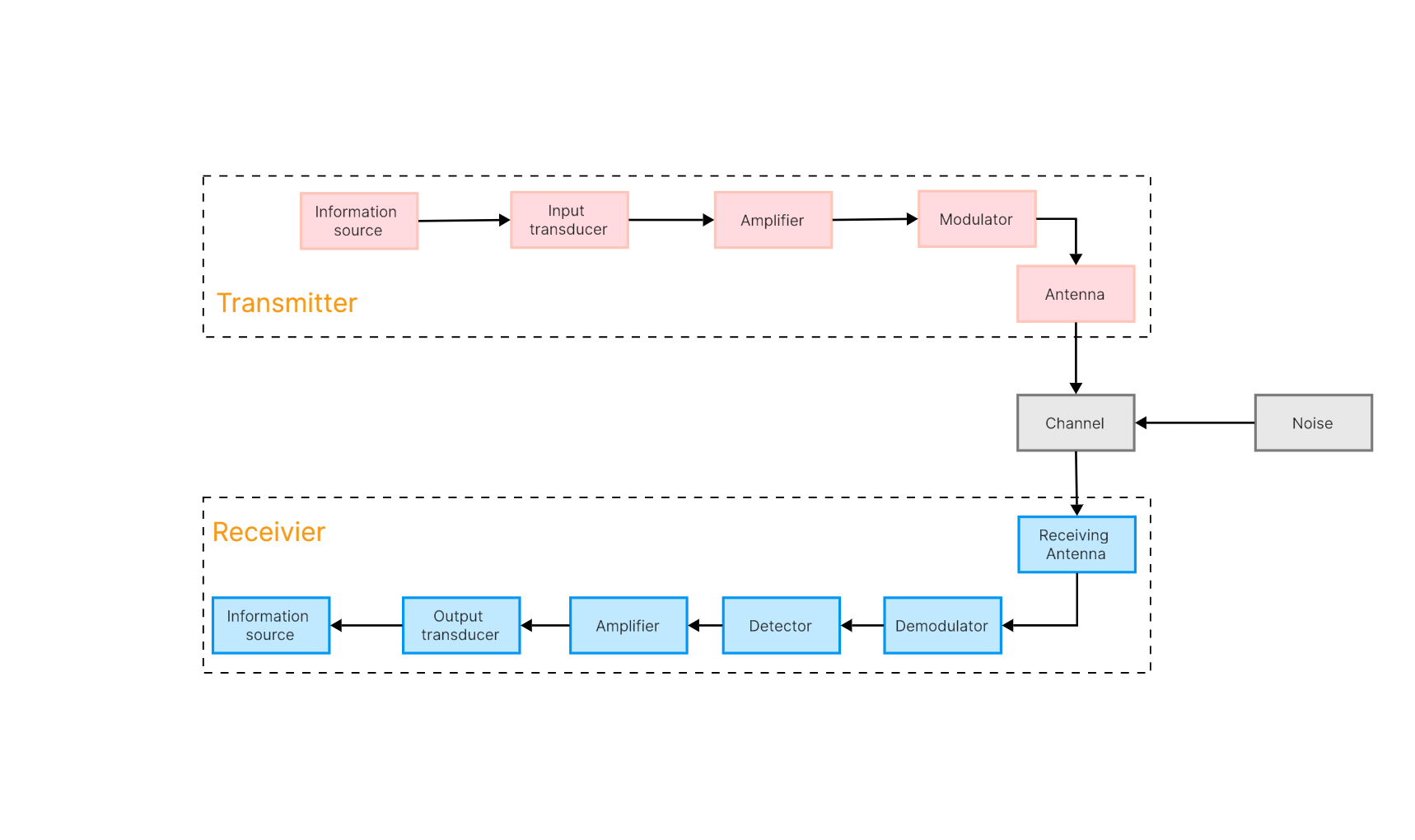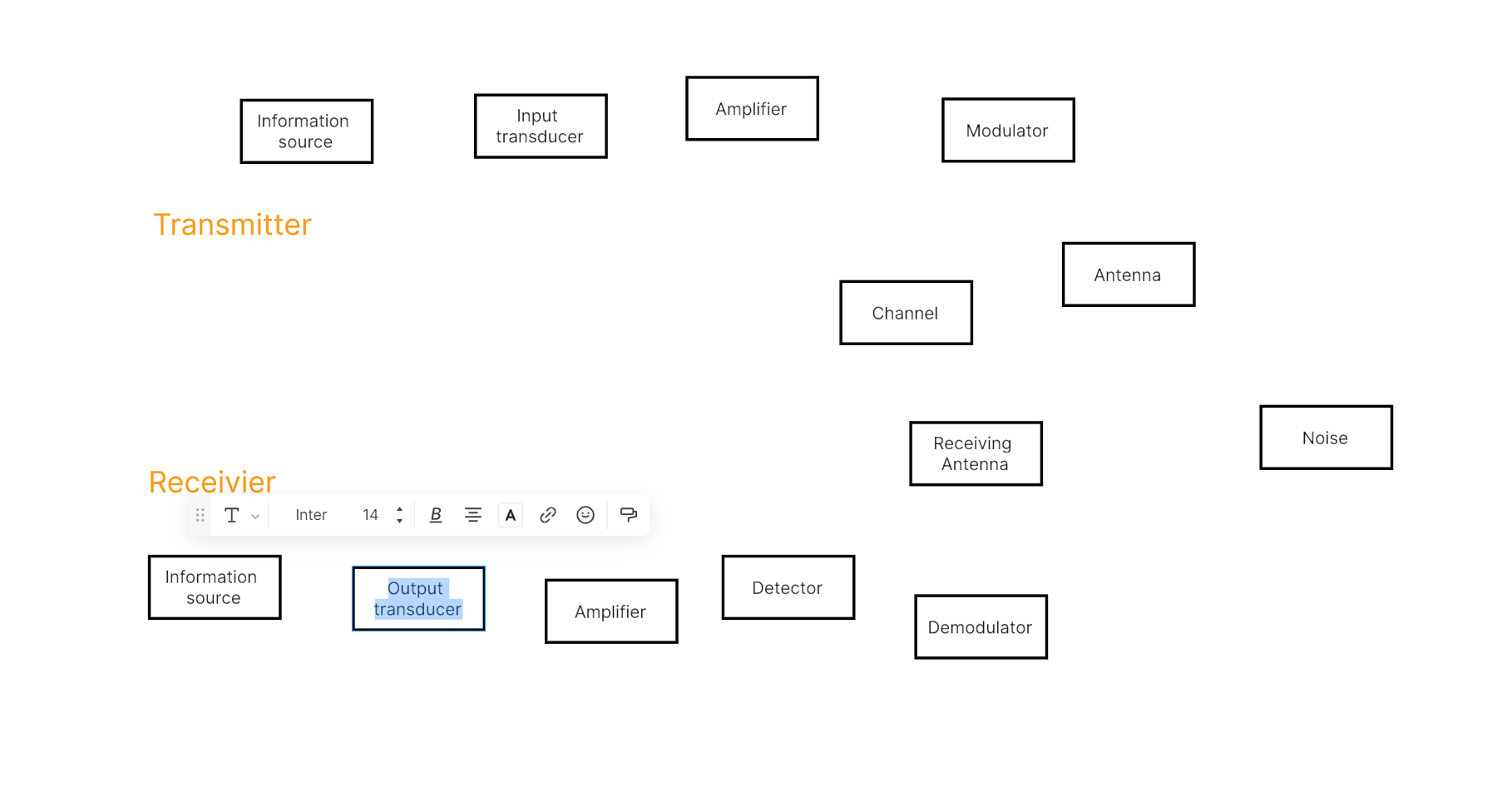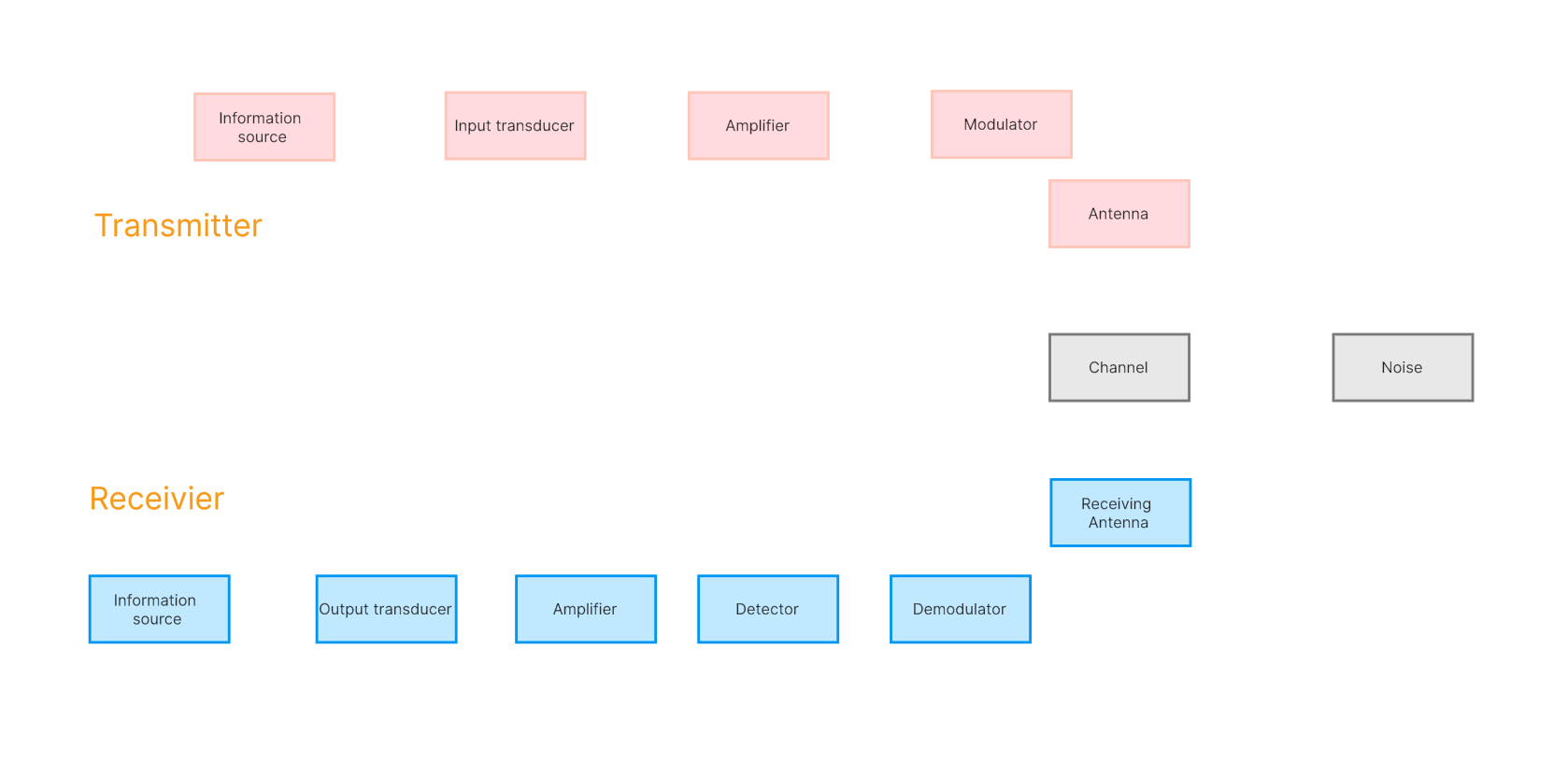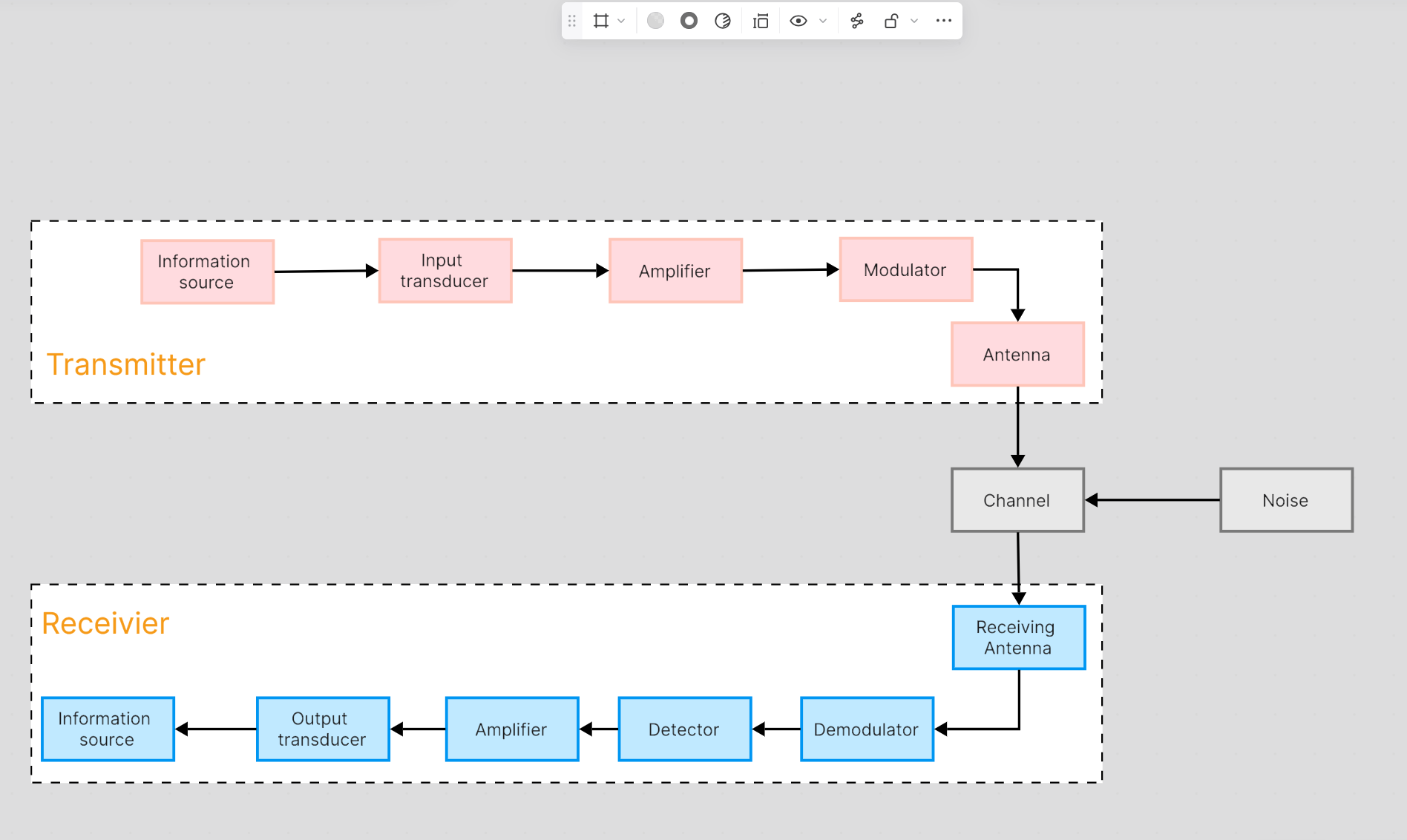In the realm of telecommunications, communication systems are fundamental. However, the complexity of these systems can often be daunting. Here's where block diagrams come into play. In this article, we'll explore what a communication system block diagram is and delve into its importance and creation. Keep reading.
What Is a Communication System Block Diagram
A block diagram is a schematic that represents the workings of a system through the use of blocks and arrows. Each block signifies a specific part or function within the system, and the arrows indicate how information flows from one block to another.

When applied to a communication system, a block diagram outlines the major components involved in transmitting information from one point to another. The diagram encapsulates various aspects of the system, from the source of information, through various transmission and processing stages, to the destination.
Why Is a Block Diagram Important in Communication System
Block diagrams are not merely illustrative tools but serve vital functions in understanding and improving communication systems. Here's why:
Simplifies Complex Systems
Communication systems are multi-faceted and intricate, often involving numerous stages and processes. Block diagrams simplify these complexities into digestible elements, enabling an overall grasp of the system's function and operation.
Facilitates System Design
When creating a new communication system, block diagrams serve as foundational blueprints. They provide clarity about the components needed and their interrelationships.
Assists Troubleshooting
In case of system failure or inefficiency, block diagrams help identify problematic components by visualizing data flow and interaction between components.
Enhances Communication
Block diagrams make complex concepts accessible to diverse audiences, from engineers to non-technical stakeholders. They provide a universal language that enables clear and effective communication about system design, operation, and troubleshooting.
Main Components of a Communication System
To understand the various elements at play in a communication system, we first need to recognize that these systems exist to transmit information from a source to a destination. Keeping this objective in mind, let's look at the main components:
- Source
The information source generates the message to be transmitted. This could be anything from text in an email to voice data in a phone call, or even video data in video conferencing.
- Input Transducer
An input transducer converts the input message into an electrical signal that can be manipulated for transmission. For example, a microphone serves as an input transducer when you make a voice call, transforming sound waves into electrical signals.
- Transmitter
The transmitter takes the output of the input transducer and modulates it to prepare it for transmission. This usually involves converting the signal into a form that can be effectively transmitted over the communication channel, such as radio waves.
- Channel
The channel is the physical medium through which the signal travels from the transmitter to the receiver. This can take many forms, such as copper wire, optical fiber, or even air in the case of wireless communication.
- Receiver
Once the signal reaches its destination, it is the job of the receiver to demodulate it, turning it back into a form that can be used by the output transducer. The receiver essentially reverses the transmitter's actions.
- Output Transducer
Finally, the output transducer takes the demodulated signal from the receiver and converts it back into its original form - that is, the form that can be interpreted by the destination. This could involve converting electrical signals back into sound waves (like speakers in a radio), text (like on a computer screen), or video.
These are the basic components involved in any communication system, be it telephones, radios, television broadcasts, or internet data transmission. While their complexities may vary depending on the specific system and technology used, their core purpose remains unchanged - to enable effective and efficient communication.
How to Make a Communication System Block Diagram in Boardmix
Boardmix is an intuitive and versatile tool that allows users to create diagrams, graphs, flowcharts, and more with ease. One of its offerings is the ability to craft detailed block diagrams. Its simple interface, extensive library of shapes, and connecting arrows are a few features that make it suitable for our task at hand.

Here is a step-by-step process to create a block diagram in Boardmix:
Step 1. Log into Boardmix and start a new board.

Step 2. Navigate to the 'Shapes' section on the left panel. Add a rectangle shape for each of the main components of your communication system - the source, input transducer, transmitter, channel, receiver, and output transducer. Place these blocks in the sequence of information flow.

Step 3. Click on each block and type the corresponding component name. Customize the text to be clear and readable by adjusting the font size, color, and alignment.

Step 4. Use the 'Connectors' tool to draw arrows between the blocks. Ensure that the arrows are pointing in the correct direction, i.e., from the source to the destination.

Step 5. Finally, use Boardmix's design features to add color, adjust line thickness, or add background patterns to make your diagram visually appealing and easy to understand.

By following these steps, you can easily create a communication system block diagram in Boardmix that effectively visualizes the complexity of the system and aids in its understanding.
Tips and Tricks on Making a Communication System Block Diagram
Creating effective block diagrams requires more than just knowledge of the software; it demands a deep understanding of the content, a keen eye for details, and strategic use of visual elements. Here are some key pointers to consider:
- Keep it Simple
While it's important to be accurate and include all the necessary components in your diagram, don't make it overly complicated. The primary goal is to communicate your information clearly, so avoid clutter and keep your diagram simple and easy to follow.
- Use Consistent Shapes and Lines
Consistency in using shapes and lines makes your diagram look neat and professional. Ensure you use the same shapes for similar components and consistent lines for connections.
- Consider the Flow
Ensure your diagram follows a logical flow that matches the communication process's sequence, from source to destination. This helps the reader to understand the system quickly and accurately.
- Label Clearly
Properly labeling each block is essential for clarity. Use text sizes and fonts that are easily readable, and ensure that your labels correctly represent the corresponding components.
- Leverage Colors Strategically
Colors can greatly enhance the clarity and visual appeal of your diagram. However, ensure you use them strategically. For instance, you might use different colors to differentiate between different types of components, or to highlight important elements.
- Review and Refine
Finally, always review your work before considering it complete. Look out for errors or areas of improvement and refine your diagram until it accurately and effectively represents the communication system you wish to portray.
Armed with these tips and tricks, you're now ready to create high-quality communication system block diagrams that not only accurately represent the system but are also clear, compelling, and engaging.








